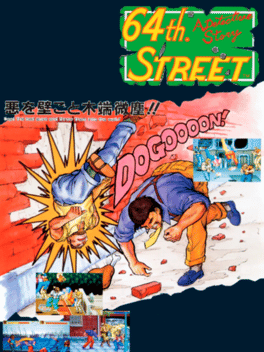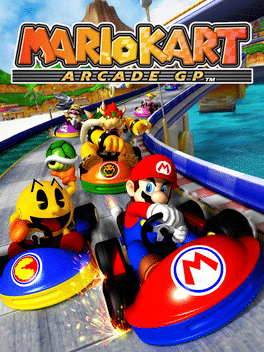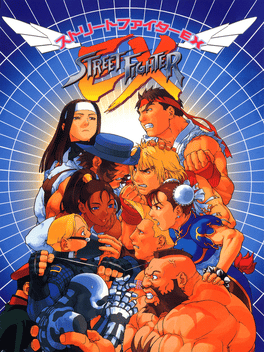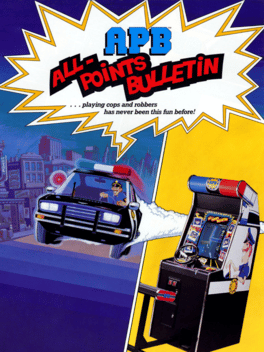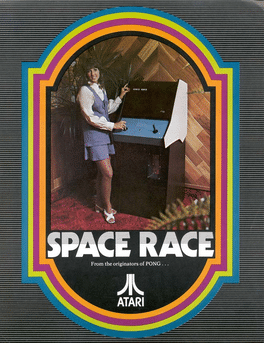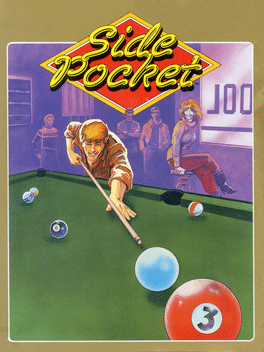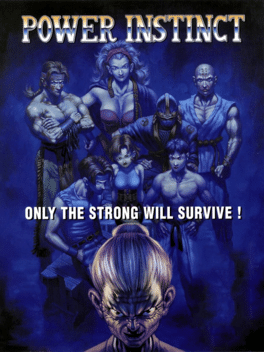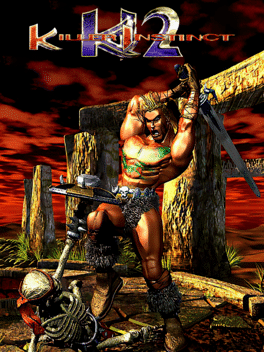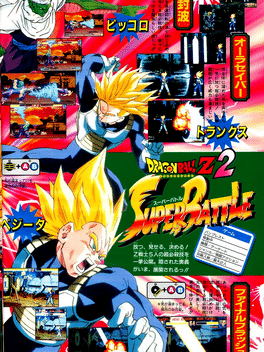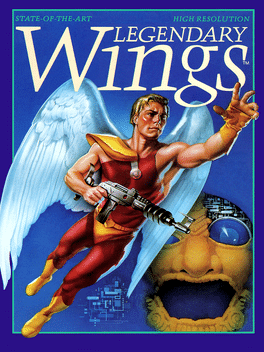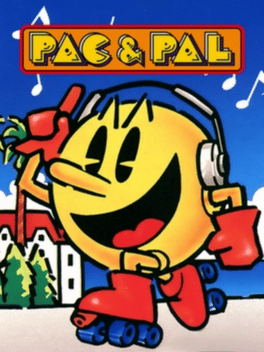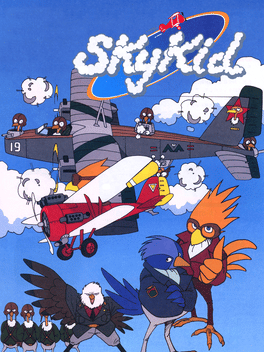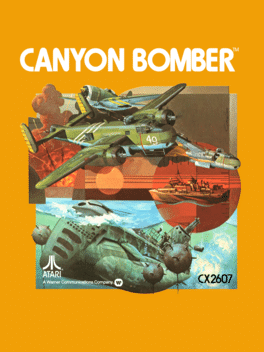Most Popular Arcade Games - Page 5
-
Punch-Out!!
1984
Punch-Out!!
1984
star 7.6Punch-Out!! is a boxing arcade game by Nintendo, released 1984. It was the first in a series of successful Punch-Out!! games that produced an arcade sequel known as Super Punch-Out!!, a spin-off of the series titled Arm Wrestling, a highly popular version for the NES originally known as Mike Tyson's Punch-Out!!, and Super Punch-Out!! for the SNES. The arcade game introduced recurring video games characters such as Glass Joe, Piston Hurricane, Bald Bull, and Mr. Sandman. It is also notable to be the debut project for Koji Kondo, who would later go on to write the acclaimed music for the Super Mario and The Legend of Zelda series. -
64th Street: A Detective Story
1991
star 6.9Players One and Two start with the two selectable protagonists, Rick and Allen. Each private detective uses different fighting styles, attempt to solve cases by beating up each criminal they encounter. Lots of special items can be found by throwing enemies into the background and breaking things, typical of this popular genre in the 1990s arcades. Along the way they are harangued by all manner of thugs and toughs, whose costumes range from 1980s hip-hop wear to stereotypical pirates. The bosses are tough by way of strange special attacks. -
Tetris
1988
-
Mario Kart Arcade GP
2005
Mario Kart Arcade GP
2005
star 5.2Mario Kart Arcade GP is an arcade-only iteration of Nintendo's Mario Kart series, developed by Namco. Designed for the Triforce arcade board (also used for F-Zero AX), players can race as one of eleven characters on twenty-four tracks. On certain machines, for an additional fee, a player's data can be saved on a magnetic card which can be inserted into the machine again later to retain unlocked items and records. Nintendo's limited role of development was mainly isolated to ensuring that it was a worthy title for the established franchise. This game's arcade cabinet houses a camera that will take a photograph of the player's face. The photo can be customized and then will be displayed above the player's character during multiplayer races. The game is noted for being the first Mario Kart to feature playable crossover characters: Namco's Pac-Man, Ms. Pac-Man and Blinky. The game's sequel also featured Mametchi, a character from the Tamagotchi games. The third installment included Don from the Taiko no Tatsujin fran -
Street Fighter EX
1996
Street Fighter EX
1996
star 7.6The Street Fighter EX fighting system uses fighting systems of the Street Fighter II and Street Fighter Alpha series. In many ways, EX still plays like a 2D fighting game, but the linear plane in which characters fight often changes along a 3D battleground. The game uses special moves and super combos familiar or similar to previous games in the series. Like in Alpha and Darkstalkers, the super combo gauge, used to do Super Combos and other moves, was divided into three levels. The game introduces various new features to enhance the player's combat choices. It was followed by an updated arcade version titled Street Fighter EX Plus, as well as a PlayStation-exclusive home console version titled Street Fighter EX Plus α, both released in 1997. -
Sky Diver
1978
Sky Diver
1978
star 5.6Sky Diver is an arcade video game designed by Owen Rubin, and released by Atari, Inc. in 1978. Its interface is a simple third-person view of a parachuting drop zone. Sky Diver is a two-player game, although one player can play. The object of Sky Diver is to jump out of a plane, release a parachute and land on the landing pad. To get higher points, the player must release the parachute closer to the ground. The player has nine jumps. If the landing pad is missed, the player loses points. The highest score possible is 99 points (11 points maximum per jump). -
APB
1987
APB
1987
star 5.9APB ("All Points Bulletin") is a 1987 arcade game where the player assumes the role of "Officer Bob," a rookie police officer. As Bob, players drive around the city, ticketing motorists for minor infractions and pulling over more serious offenders. Eventually, players must apprehend criminals for which an all-points bulletin has been called. -
Space Race
1973
Space Race
1973
star 6.7Space Race is the second arcade game created by Atari and was released in July, 1973. The two players each control a rocket ship; the object of the game is to make it from the bottom of the screen to the top, while avoiding obstacles such as asteroids. Score is kept electronically and the background consists of a simple starfield. -
Ninja Baseball Bat Man
1993
star 7Ninja Baseball Bat Man is a 1993 beat 'em up developed and published by Irem Corporation in association with its North American division Irem America exclusively as an arcade game. It is the fourth arcade game by IREM to use a belt scroll perspective, following Blade Master, Hook and Undercover Cops. -
Side Pocket
1986
Side Pocket
1986
star 7.4Side Pocket is a pocket billiards video game originally released into arcades by Data East in 1986. The arcade version was eventually ported to six home console platforms and two sequels to the game were produced, as well as a spin-off series called Pocket Gal. G-Mode currently owns the intellectual property rights to the Side Pocket series, and licenses these games globally. -
Power Instinct
1993
Power Instinct
1993
star 6.8The original Arcade version of Power Instinct. This version only has the arcade mode and multiplayer while the later ports to console added practice, battle, time attack and life attack game modes. Power Instinct is a one-on-one 2D fighting game in the tradition of Street Fighter 2, in which you select your character from a group of 8 unique fighters and attempt to defeat your opponents in successive fashion using your arcade reflexes and your character's unique moves. -
Killer Instinct 2
1996
Killer Instinct 2
1996
star 7.6Killer Instinct 2 follows on from the plot line that the previous installment ended with. Eyedol's death at the hands of Orchid accidentally sets off a time warp, transporting some of the combatants back in time and allowing the Demon Lord Gargos to escape from Limbo. Now, trapped 2000 years in the past, the warriors that survived Killer Instinct, along with several new faces, fight for the right to face Gargos in combat, but Chief Thunder, Cinder and Riptor did not return. Each character that survived the journey from the first game has a corresponding background story, while new characters on this installment are native inhabitants of this past time period. Some fighters, like T.J. Combo who survives from the original, just want to get home. Others, like new character Tusk, want to bring an end to Gargos and his reign of evil. This time there is no tournament or prize money, just a fight to the finish with the fate of the future hanging in the balance. -
Dragon Ball Z 2: Super Battle
1994
star 7.1Dragon Ball Z 2: Super Battle is a video game for arcades based on the anime Dragon Ball Z. It was designed and manufactured exclusive in Japan by Banpresto in 1995. The game is a direct sequel the previous arcade Dragon Ball Z game, produced two years earlier. -
Dragon Ball Z
1993
Dragon Ball Z
1993
star 6.1Dragon Ball Z is a fighting game designed and manufactured in Japan by Banpresto in 1993. The game's cabinet is shaped like a robot with markings similar to Goku's gi (suit). The game features large sprites and a color palete that is identical Toriyama's water color scheme in the manga. The environments are semi destructible as chunks of wall or ground could be destroyed. The controls are unique as most of the characters movements are flight related. The playable characters are Goku, Super Saiyan Goku, Gohan, Vegeta, Piccolo, Frieza, Captain Ginyu, Recoome, and Burter. -
Willow
1989
-
Legendary Wings
1986
Legendary Wings
1986
star 6.8Legendary Wings is a fantasy-themed shoot-'em-up game released by Capcom as a coin-operated video game in 1986. The player takes control of a young soldier equipped with magical wings who must save the world from a malfunctioning supercomputer. Legendary Wings is set in a distant future where an alien supercomputer named "Dark", which has been helping human civilization achieve a new state of enlightenment since ancient times, has suddenly rebelled against mankind. Two young warriors are given the Wings of Love and Courage by the God of War Ares in order to destroy Dark and ensure mankind's survival. The coin-op version of Legendary Wings can be played by up to two players simultaneously, with a second player being allowed to join the game at any time or even continue after a game over. The game's controls consists of an eight-way joystick and two buttons which changes depending on the context. The game consists of five areas with two different playing styles: the first segment in each stage is a top-view vertical -
Night Slashers
1993
Night Slashers
1993
star 7.1The dead have risen from their graves, and monsters and mutants prey upon what's left of the living. Three monster hunters have joined together, using their knowledge of the occult to slay the undead scourge. -
Pac & Pal
1983
Pac & Pal
1983
star 5.4Pac & Pal is an arcade game that was released by Namco on July 30, 1983 exclusively in Japan. It runs on Namco Super Pac-Man hardware, and the object of the game is for Pac-Man to eat all the items before he is caught by the ghosts. Most of the items are fruits from the original Pac-Man game, with a few new additions. Their value varies, starting with cherries at 50 points, and ending with keys from 700 to 5000 points. The items had to first be unlocked by turning over cards distributed around the maze (instead of eating keys like in Super Pac-Man). Very few cabinets still exist today, and this is possibly one of the rarest Pac-Man titles to find in playable format outside Japan. -
Sky Kid
1985
Sky Kid
1985
star 5You are the legendary Red Baron, flying a plane through a horizontal side-scrolling scenery set during World War I. To complete a mission, you simply need to get to the landing spot on the other side without being shot down, but you can gain extra points by destroying enemy vehicles and planes. For huge points, pick up a bomb hidden in the level (you will be warned by a sound when approaching it) and drop it on a large structure. If you fail to land on the landing strip, you run out of fuel and crash. You can only shoot horizontally and diagonally by tilting the plane's nose. When in trouble, perform an aerial loop with the secondary button, this often destroys other planes and avoids bullets. There is a co-op mode with the character Max as well. -
Canyon Bomber
1977
Canyon Bomber
1977
star 5.9Canyon Bomber is a black-and-white 1978 arcade game, developed and published by Atari. The game was rewritten in color and with a different visual style for the Atari 2600, also in 1978. The player and an opponent fly a blimp or biplane over a canyon full of numbered, circular rocks, arranged in layers. The player does not control the flight of vehicles, but only presses a button to drop bombs which destroy rocks and give points. Each rock is labeled with the points given for destroying it. As the number of rocks is reduced, it becomes harder to hit them without missing. The third time a player drops a bomb without hitting a rock, the game is over.

